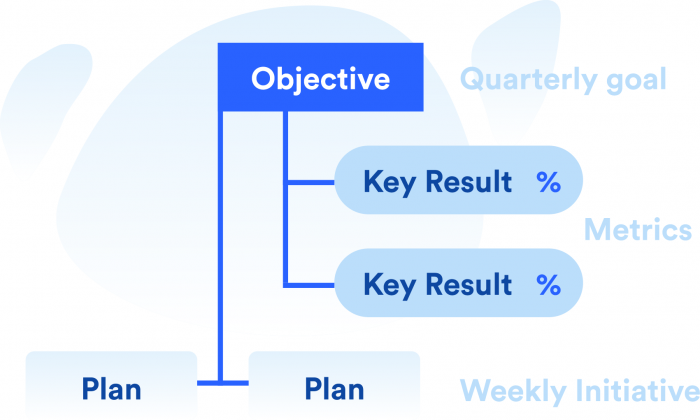Discover the secret behind transforming your workforce into a motivated and unstoppable team using the magic of OKRs!

Table of Contents
- Educate Employees About OKRs
- Align OKRs with Employees’ Goals and Aspirations
- Foster Open Communication and Transparency
- Involve Employees in Setting OKRs
- Provide Training and Resources
- Recognize and Celebrate Achievements
- Address Challenges and Roadblocks
- Conclusion
Welcome to our blog post on the art of employee engagement and how to unleash the power of OKRs (Objectives and Key Results). In today’s competitive business landscape, achieving organizational goals requires more than top-down directives. It demands the active involvement and commitment of every employee. Implementing OKRs is a proven methodology to drive alignment and focus within an organization. However, to truly reap the benefits, it is crucial to gain buy-ins from employees. This guide will outline the step-by-step process to get employee buy-ins for OKRs successfully.
Educate Employees About OKRs
Before diving into gaining buy-ins, it is essential to ensure that employees clearly understand what OKRs are and their importance. OKRs stand for Objectives and Key Results. Objectives are an organisation’s ambitious goals, while Key Results outline the specific, measurable actions that will contribute to achieving those goals.
Explaining the concept of OKRs in simple terms is essential, avoiding jargon or complex terminology. By breaking down this methodology, employees will have a solid foundation, allowing them to see the value and relevance of OKRs to their work.
Showcasing real-life examples of successful OKR implementations can also be incredibly helpful. Sharing stories of organizations that have seen transformative results through OKRs will inspire employees and ignite a desire to participate.
Align OKRs with Employees’ Goals and Aspirations
When employees see a direct link between their goals and aspirations and the organization’s OKRs, they are more likely to embrace and commit to the process. Encourage employees to share their individual goals and aspirations and guide them in identifying how their contribution to OKRs can align with their objectives.
By illustrating that OKRs can create growth and career development opportunities, employees will understand how investing their time and effort in achieving these goals will benefit them personally.
Foster Open Communication and Transparency
Open communication is vital for ensuring employee buy-ins. Foster an environment where employees feel comfortable asking questions and sharing concerns. Encourage regular updates on OKR progress and performance at team level.
When employees are kept in the loop and understand their actions’ impact on the organization’s goals, it fosters a sense of empowerment and ownership. Transparency reduces ambiguity and establishes trust, making buy-ins more likely.
Involve Employees in Setting OKRs
When employees have an opportunity to contribute to the setting of OKRs actively, they are more likely to feel invested and committed. Conduct collaborative goal-setting sessions where employees can provide ideas and suggestions for objectives and key results.
This involvement ensures that employees play an active role in shaping the organisation’s direction. Feeling heard and respected will boost morale and engagement, ultimately fostering buy-ins for the OKR process.
Provide Training and Resources
To ensure the successful implementation of OKRs, providing employees with the necessary training and resources is crucial. Offer training sessions or workshops on OKR methodology and best practices. Ensure employees access relevant resources like templates, tools, or case studies.
Equipping employees with the necessary knowledge and tools will make them feel confident and capable of effectively implementing OKRs. Ongoing guidance and feedback will also help employees understand how to achieve their OKRs and overcome any challenges they may face.
Recognize and Celebrate Achievements
Recognition and celebration of achievements play a significant role in fostering employee buy-ins for OKRs. When employees receive acknowledgement and rewards for their progress and results, it reinforces their commitment to the process.
Share success stories and highlights to inspire and motivate others. Cultivate a culture of continuous improvement by providing feedback and sharing lessons learned. You create a positive feedback loop that encourages ongoing buy-ins by fostering an environment that celebrates and rewards progress.
Address Challenges and Roadblocks
It is essential to anticipate and address any challenges or roadblocks that may hinder employee buy-ins for OKRs. Identify common obstacles and offer guidance on overcoming resistance or scepticism.

Support employees during the implementation phase, providing reassurance and assistance whenever needed. By addressing challenges head-on and offering solutions, you build trust and demonstrate your commitment to ensuring the success of the OKR process.
Conclusion
By following these steps, you can gain employee buy-ins for OKRs, unlocking their full potential within your organization. Educating employees, aligning OKRs with personal goals, fostering open communication, involving employees in setting OKRs, providing training and resources, recognizing achievements, and addressing challenges will create employee engagement and commitment to the OKR process.
Remember, gaining buy-ins is an ongoing process that requires continuous effort and communication. By actively engaging employees in the OKR journey, you will create a work environment where everyone is aligned and empowered to achieve the organization’s objectives and key results.